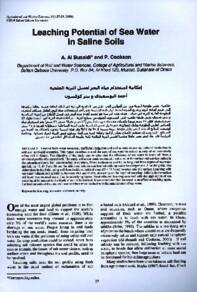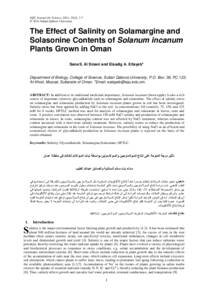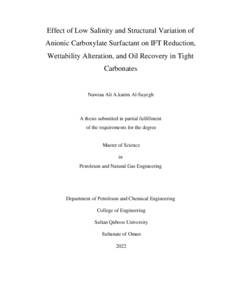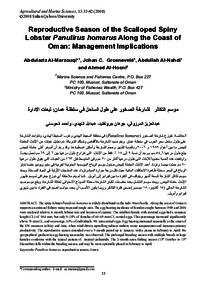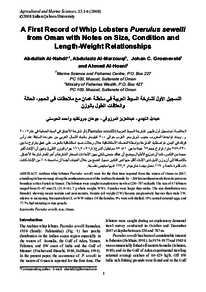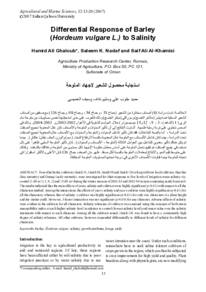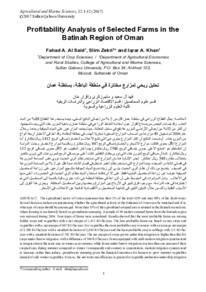وثيقة
Leaching potential of sea water in saline soils.
المساهمون
Cookson, P., مؤلف
الناشر
Sultan Qaboos university
ميلادي
2004
اللغة
الأنجليزية
الموضوع
الملخص الإنجليزي
Limited fresh water resources, inefficient irigation and soil salinity reduce agricultural production in arid and semi-arid countries. This paper describes one of the uses of sea water to reducc salinity of an excessively saline soil in Oman. The objective of the study was to determine the efficiency of sca water to leach salt from a simulated profile of a coastal soil. The sandy soil under study contained a salt crust at the surface and was less saline in the subsurface layers. Soil was repacked in columns, 10 cm in diameter and 43 cm long, and thrce depths of sea water applied, i.e. 43, 64.5 and 86 cm. An additional column was leached with tap water for comparison. A leaching trial was undertaken in the field, using soil from inside cylindrical rings (D = 31.5 cm) inserted into the surface. Leaching with sea water reduced soil salinity by between 90.4 and 17.8%, depending on the depth of sampling. Salinity in the surface soil layer was reduced more than in underlying layers. Most efficient leaching occurred with the application of sea water equal in amount to the depth of soil to be leached. It was concluded that sea water is an effective leaching agent, but leached soils still contained more salt than when leached with the same amount of tap water.
المجموعة
ISSN
2410-1079
URL المصدر
zcustom_txt_2
AI-Busaidi, A., & Cookson, P. (2004). Leaching potential of sea water in saline soils. Journal of Agricultural and Marian Sciences, 9 (1), 27-30.
الملخص العربي
تعتبر ملوحة التربة من أبرز العوامل التي تقلل من الإنتاجية الزراعية في البلاد الجافة وشبه الجافة بالإضافة إلى عدم كفاءة الري وشح المياه العذبة، تركز هذه الدراسة على أحد استعمالات مياه البحر كعامل مساعد لتخفيف الملوحة العالية للتربة في عمان. هدف هذه الدراسة هو تحديد كفاءة مياه البحر في غسل الأملاح من التربة الساحلية والتي تحتوي على طبقة ملحية في المستوى العلوي من سطح التربة. تم إعادة تعبئة التربة في أعمدة بطول 43 سم وبنصف قطر 10 سم وريها بكميات مختلفة من ماء البحر (43 سم ، 64.5 سم ، 86 سم) وتم استخدام مياه الصنابير القليل الملوحة وذلك للمقارنة. تم تكرار نفس الدراسة على التربة الساحلية باسطوانة قطرها 31.5 سم أوضحت النتائج أن ماء البحر يقلل ملوحة التربة بنسبة 90.4 و17.8% وأن هذه النسبة تتفاوت باختلاف بعد العينة من السطح. كما وجد أن معظم الأملاح يمكن إزالتها بإضافة كمية من الماء تساوي عمق التربية المراد غسلها. وخلاصة الدراسة فإن ماء البحر يعتبر عاملا مناسبا لغسل التربية المالحة لكنه بطبيعة الحال أقل كفاءة من ماء الصنبور.
قالب العنصر
مقالات الدوريات

